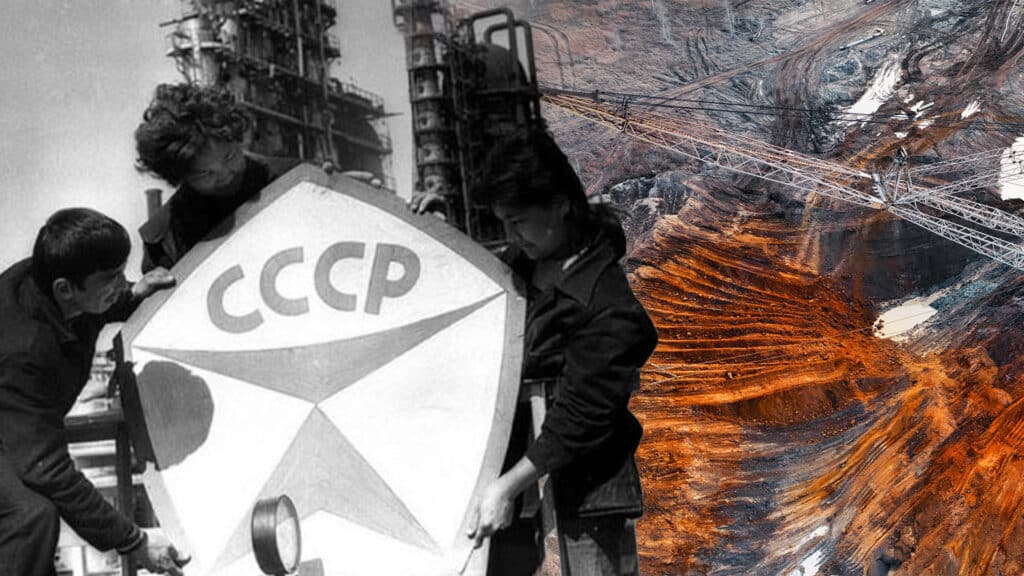Kazakhstan declassifies Soviet maps of rare metal fields in a bid to attract new investors

According to Prime Minister of Kazakhstan Olzhas Bektenov, the country is going to open access to fields of indium, scandium, vanadium, thallium, gallium and other rare earth elements (REEs) and rare metals (RMs) that were classified back in the Soviet times.
«In December 2023, we declassified some data on REE and RM reserves in Kazakhstan. Currently, we are excluding some reserves of REEs and RMs (indium, scandium, vanadium, thallium, strontium, gallium and rare earth elements) from the list of state secrets under the Ministry of Industry and Construction,» the prime minister reported in response to an MP’s request.
Bektenov highlighted that in 2021, the government attracted new investments into the industry by simply declassifying some data about reserves of lithium, tantalum, niobium and other chemical elements in Kazakhstan. For example, German HMS Bergbau AG is already implementing a lithium project in the East Kazakhstan region in conjunction with Qazaq Lithium (controlled by CREADA CORPORATION).
As Kazakhstan is seeking new ways to boost its mining sector, it has started developing a draft national infrastructural plan to cover areas such as energy, transportation, digital infrastructure and water supply infrastructure. Under the plan, the government is going to eliminate all the bottlenecks preventing new minefields from swift development. For instance, authorities plan to build a power grid straight to minefields, launching targeted investment programs in conjunction with regional power grid companies.
For the most important fields, the government is even ready to build railways. This work should be completed by 2029.
To ensure that investors have free access to geological information and that all business processes related to subsoil use are automated, authorities have launched minerals.gov.kz, a website designed to serve the needs of subsoil users. For example, investors can obtain licenses necessary for subsoil activities online. So far, the government has issued 2,577 licenses for exploration and 148 licenses for the production of useful solid minerals.
By the end of this year, 12 more features are going to be available online on the website. These are licenses for the production of common minerals, geological exploration, subsoil space use, switch to license mode and export of geological information, among others. Furthermore, the government has conducted a set of auctions for solid mineral exploration and production via the e-qazyna.kz online platform. As a result, the government received $7.5 million in subscription bonuses.
As Bektenov noted, the government is going to allocate necessary funds to cover all the expenditures associated with a geological and geophysical survey of two million square kilometers and will continue to expand online access to such geological information. To stimulate mineral exploration and production, the government has also decreased taxes applied to REE and RM production to the lowest level (from 1% to 7.8%).
For instance, the tax rate for the production of gallium is 1%, graphite – 3.5%, stannic tin – 3.9%, vanadium – 5.2%, indium – 6%, platinum and palladium – 6.5%, tellurium – 7%, lithium and niobium – 7.7% and stibium, bismuth, cobalt, magnesium and tantalum – 7.8%.
According to Andrei Lukin, chair of the Senate’s Committee on International Relations, Defense and Security, the government should reveal all the information about REE and RM fields that were classified during Soviet rule. Given that these metals are «new oil» these days, as President Kassym-Jomart Tokayev has described them, the move can bring many benefits to the country.
REEs and RMs are critical commodities for several developed economies which continue to push demand for these metals further up. By 2040, global demand for these critical materials is expected to grow fourfold.
«The World Bank estimates that there are more than 5,000 unexplored fields in Kazakhstan evaluated at more than $46 trillion. The Scrap Metal Dealers Association of Kazakhstan says that there are 12 new REE and RM fields under exploration, including Kara Ayak and Muncha in the East Kazakhstan region,» said Lukin.
So far, Kazakhstani balance sheet of minerals includes different rare earth materials such as beryllium, bismuth, wolfram, gallium, hahnium, germanium, indium, cadmium, lithium, niobium, selenium, scandium, thallium, tantalum, tellurium, zirconium, osmium, rhenium, vanadium, lanthanum and the cerium-yttrium group.
The senator explained that lithium is currently one of the most wanted rare-earth metals in the world. This metal can be produced at six Kazakhstani fields: Yubileynoye, Verkhne-Baymurzinskoye, Bakennoye, Akhmetkino, Medvedka and Akhmirovskoye.
The Institute of Geological Sciences of Kazakhstan estimates that REEs might be deposited in the Kundybai, Zhanet, Southern Zhauyr, Koktenkol, Verhnee Espe, Karasu and Karatau fields. Apart from rare-earth materials, these fields may also contain uranium.
«Among expensive and artificial rare-earth metals, osmium-187 is outstanding. Some open sources suggest that osmium-187 price may vary from $10,000 to $200,000 per gram. And don’t forget that Kazakhstan is the only producer of this monoisotopic element. It is produced from natural raw materials. Actually, this metal is a byproduct of copper production as it is produced out of copper ore waste,» the senator said.
Even though interest in the production of REEs and RMs is currently growing in Kazakhstan, the industry is still facing several obstacles. First and foremost, the industry needs to improve its technological approach toward mineral production and processing to make it safer and more efficient. Another big problem is attracting more investments and ensuring the transfer of technologies required for the development of these minefields.
To fulfill its great potential in terms of REE and RM production, Kazakhstan is actively looking for foreign investors. The country’s government has even adopted a comprehensive plan for the development of the REE and RM industry by 2028. According to Senator Lukin, the cabinet has to follow his recommendations to succeed in this sphere.

